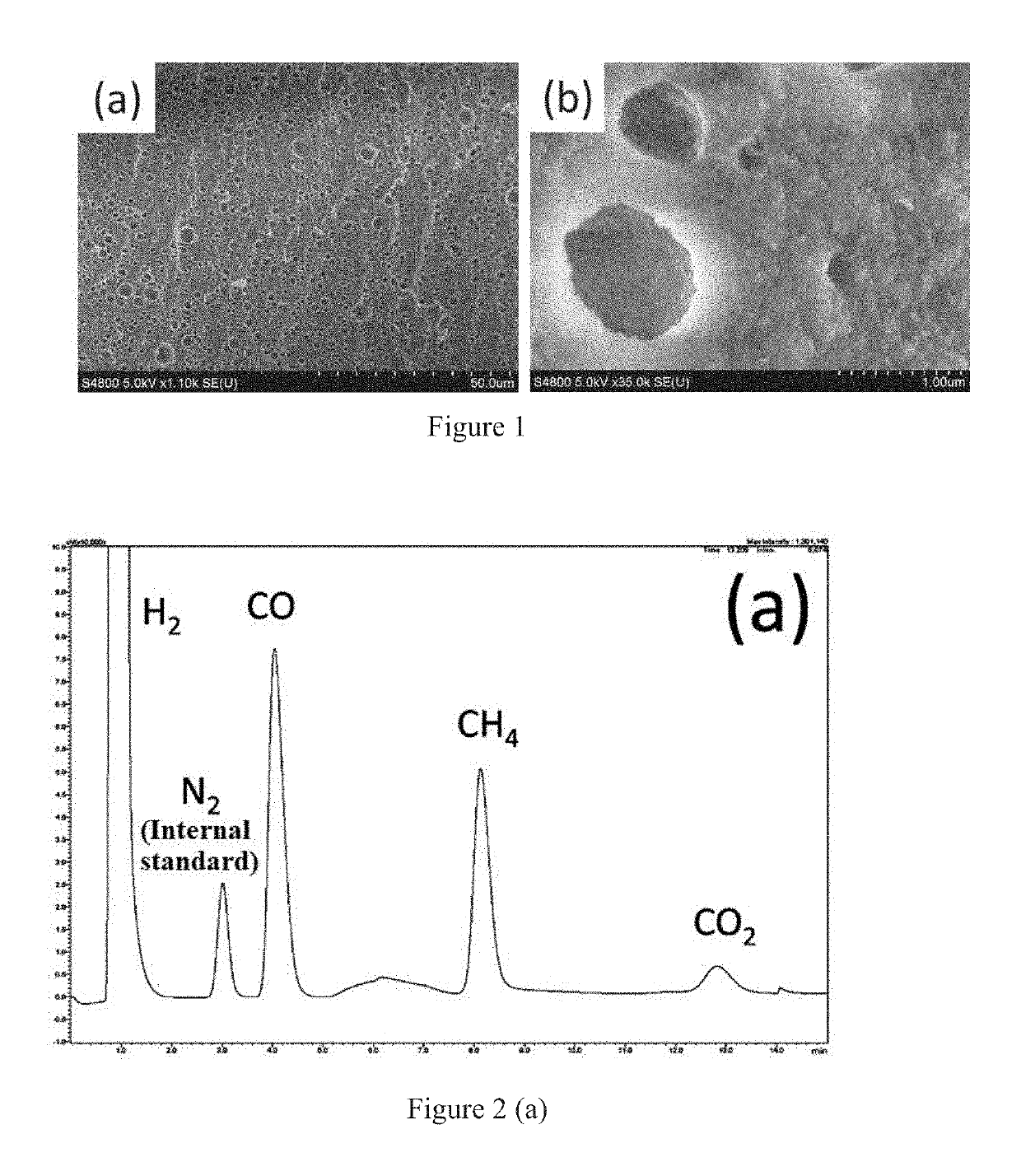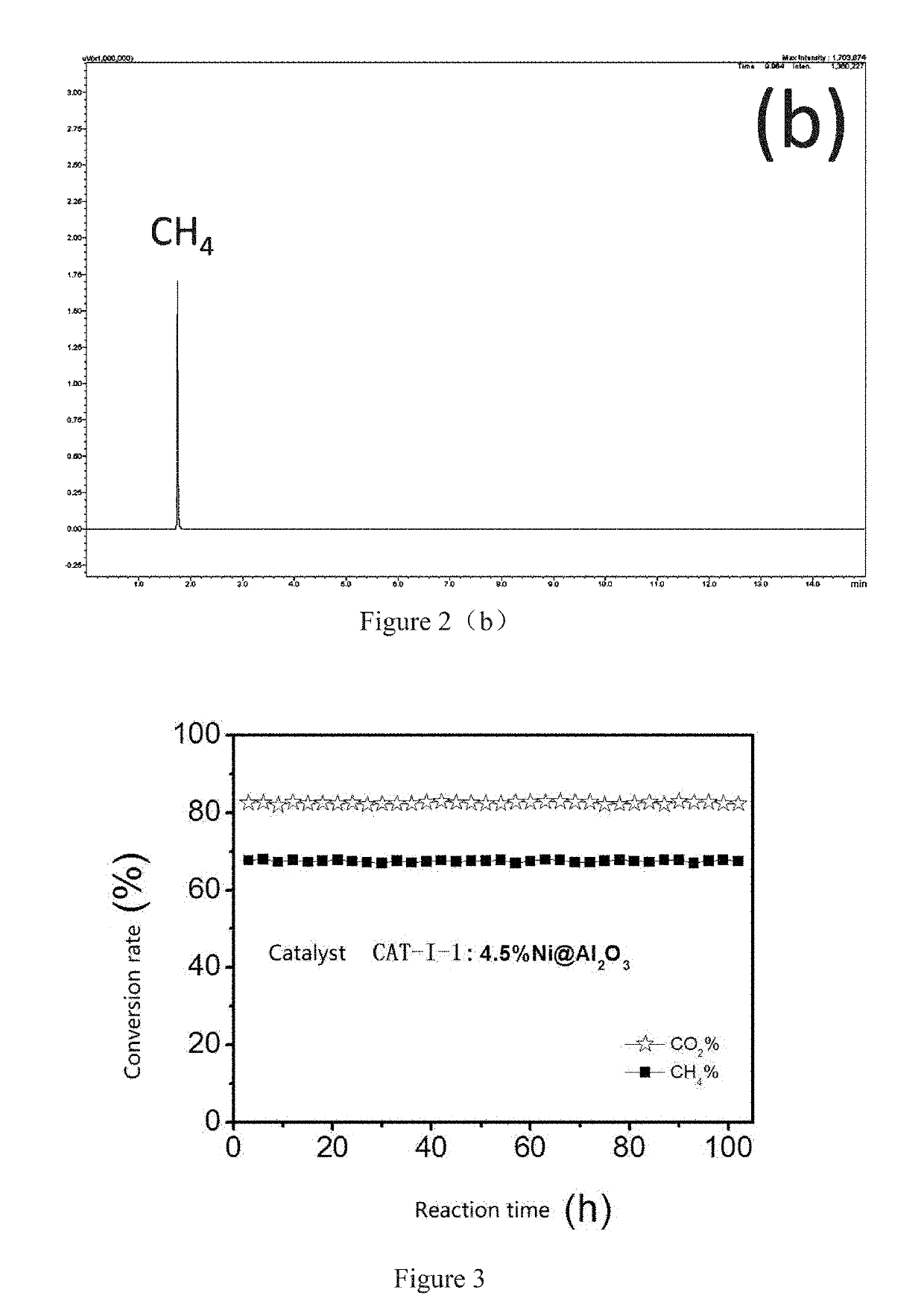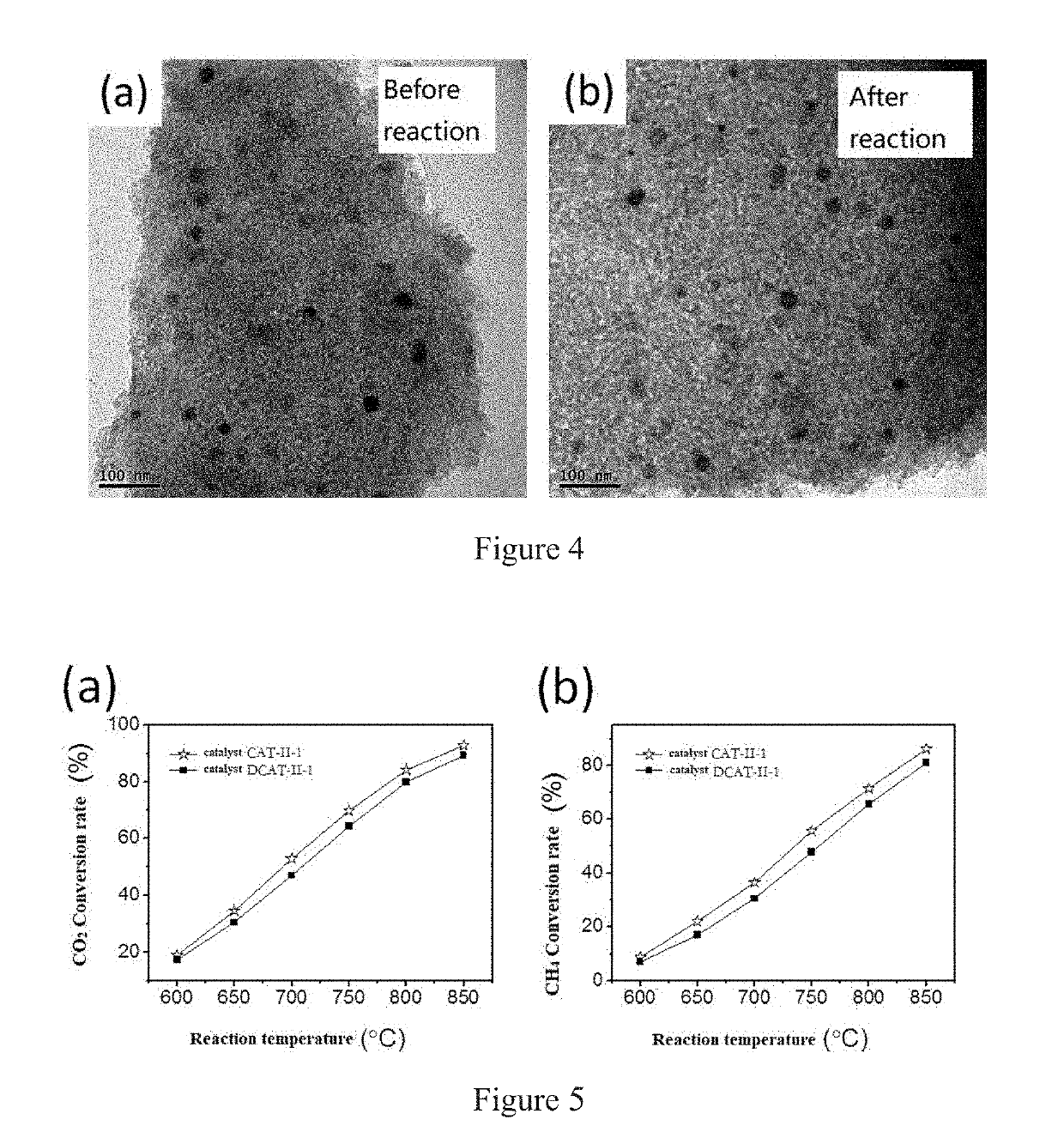Nanocatalysts, preparation methods and applications for reforming carbon dioxide and methane to syngas
a technology of carbon dioxide and methane, applied in the field of chemical engineering, can solve the problems of limiting the massive use of atmospheric, soil and groundwater, low petroleum reserves, etc., and achieves the effects of increasing the diffusion rate and mass transfer rate of the medium, good anti-sintering property, and good anti-coking property
- Summary
- Abstract
- Description
- Claims
- Application Information
AI Technical Summary
Benefits of technology
Problems solved by technology
Method used
Image
Examples
example 1 preparation
and Characterization of the Catalyst
[0069]Certain amounts of active component metal salts and / or modification component were dissolved in 10 mL of water to form an aqueous solution, and then 5 g of support was added for ultrasonic impregnation, and then solvent and surplus metal salts that had not been absorbed were filtered out. Support which absorbed the metal ion was dried under vacuum at 80° C. for 8 h, calcined under air atmosphere and reduced by hydrogen to obtain the catalyst.
[0070]Relationships between the number of the samples and specific experiment conditions, supports, raw materials are shown in Table 1.
TABLE 1MetalRange ofsalts andTime ofPercentageparticletheultrasonicCalcinationHydrogen-ReductioncompositionsizeSampleSupportdosageimpregnationConditionConditionof metals(nm)CAT-I-1hierarchicalnickelimpregnationcalcination athigh purity H2,Ni: 4.5%10-45poredacetatefor 48 h;600° C.for 4 h;reduction ataluminium(5intermittentheating rate:900° C. for 4 h;oxidemmol)ultrasound1°...
example 2
Characterization of the Samples
[0071]Scanning electron microscopes are used for the characterizations of hierarchical pored aluminium oxide microsphere I, hierarchical pored aluminium oxide microsphere II and hierarchical pored aluminium oxide microsphere III. As the typical sample, the cross-sectional SEM images of the hierarchical pored aluminium oxide microsphere I were shown in FIG. 1. It can be seen that hierarchical pored aluminium oxide microspheres possess micron-sized macropores and nanopores. The SEM images of hierarchical pored aluminium oxide microsphere II and hierarchical pored aluminium oxide microsphere III are similar with FIG. 1.
[0072]Transmission electron microscope was used to observe the particle sizes of active components and modification components rare earth particles on the catalyst. The results of the particle sizes are shown in Table 1.
[0073]ICP was used to determine the percentage contents of iron group elements, noble metal elements, alkali metal element...
example 3 catalytic
Properties of Sample CAT-I-1˜CAT-I-11
[0074]0.2 g of catalyst CAT-I-1 was put into a fixed bed reactor with an inner diameter of 1 cm, and reducted online by hydrogen. The temperature of the reactor was adjusted to the reaction temperature subsequently. The reducing gas was switched to a mixed gas of CO2 and CH4, wherein N2 was used as an internal standard. The reacted gas was cooled down and the contents of each substance therein were determined by gas chromatography. Conversions of CO2 and CH4 were calculated.
[0075]Relationships between reaction conditions and the conversions of CO2 and CH4 are shown in Table 2.
[0076]When the reaction condition was A, the chromatography results of the tail gas was shown in FIG. 2. It can be seen from FIG. 2 that, the catalyst provided by the present application has good selectivity, and the product was mainly consisted of hydrogen and carbon monoxide, which are the major constituents of syngas.
TABLE 2ConditionsCompositionReactionfor hydrogenand flo...
PUM
| Property | Measurement | Unit |
|---|---|---|
| pore size | aaaaa | aaaaa |
| pore size | aaaaa | aaaaa |
| particle size | aaaaa | aaaaa |
Abstract
Description
Claims
Application Information
 Login to View More
Login to View More - R&D
- Intellectual Property
- Life Sciences
- Materials
- Tech Scout
- Unparalleled Data Quality
- Higher Quality Content
- 60% Fewer Hallucinations
Browse by: Latest US Patents, China's latest patents, Technical Efficacy Thesaurus, Application Domain, Technology Topic, Popular Technical Reports.
© 2025 PatSnap. All rights reserved.Legal|Privacy policy|Modern Slavery Act Transparency Statement|Sitemap|About US| Contact US: help@patsnap.com



